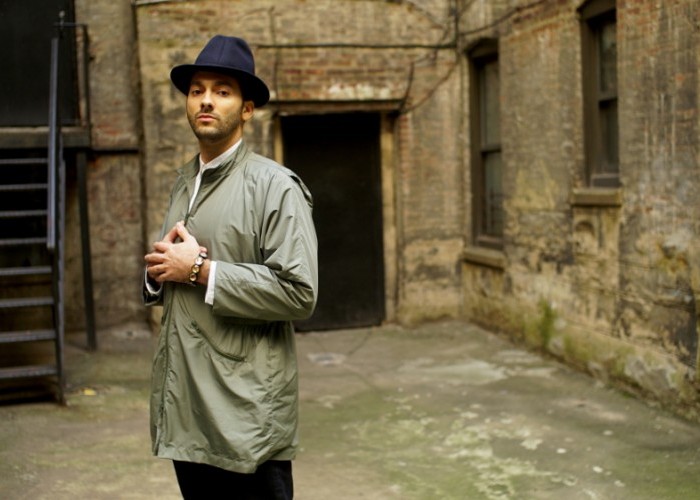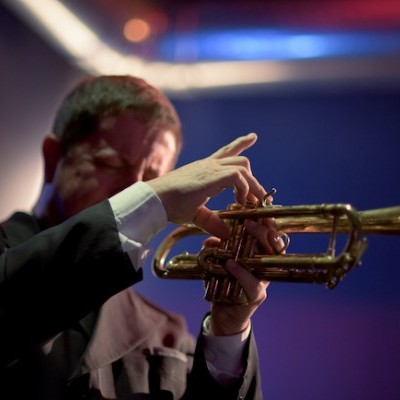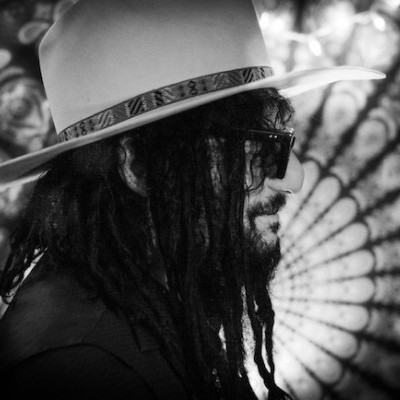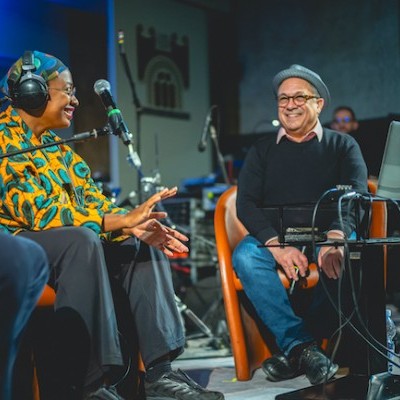Jul 9, 2024 11:35 AM
Trumpeter, Educator Jim Rotondi Dies at 61
Jim Rotondi, a renowned hard-bop trumpeter, composer and educator, died suddenly on July 7 at a hospital in France. He…

It was a “one-off” from New York. Pianist David Virelles’ ensemble was in Kalamazoo, Michigan, performing at Bell’s Eccentric Cafe as part of the mostly classical 14th-biennial Irving S. Gilmore International Keyboard Festival. Playing two sold-out shows on May 10, Virelles was joined by bassist Rashaan Carter, drummer Marcus Gilmore and percussionist Roman Diaz.
What audience members would hear was, according to Virelles’ then-predictions, “a combination of the stuff that was recorded on my latest album [Gnosis on ECM], rearranged for this particular group.” At opposite ends of the stage, the pianist, 35, squared off with the drummer and percussionist, the bass rightly anchored at center stage. The pulse was consistently irregular—except when there was no pulse or groove. There were thick, dense chords, ruminative, unadorned melodies laid bare, yet resolute. For more than 90 minutes, otherworldly moments alternated with churning Latin strains of music.
The Cuban-born Virelles, who moved to New York in 2009, spoke with DownBeat the night before.
The following has been edited for length and clarity.
How would you describe your music?
I like to think of myself as an artist with a wide range of possibilities. My work is coming out of a lot of traditional stuff, because I make it a point to go back and research, and have connections with the past.
Here’s the thing: My music is a hundred percent traditional. In jazz, I was always drawn to a very particular lineage that you could trace back to Thelonious Monk, Bud Powell, Randy Weston. There’s Herbie Nichols, Andrew Hill, Muhal Richard Abrams, Alice Coltrane. There are certain rhythmic elements, certain elements in that culture that I see very much related to how people play music in Cuba, and how people relate to each other in Cuba.
A similar spirit?
To a point, because music is a result of how people are living their lives. So, obviously, how people live in Cuba is very different than here. But I think there’s a reason why Dizzy Gillespie hooked up with Chano Pozo, and Machito with Bird. There’s a certain kind of esthetic that’s shared amongst people in the African diaspora, a certain type of feeling that you get from the music; Dizzy and Bird were aware of that, they went for it, and they made the connection. Thanks to people like that, we’re doing what we’re doing today.
How many Cuban artists have studied with Henry Threadgill?
I’m the only pianist, but in the last few years, [reed player] Román Filiú also started working with Henry. Filiú and I have been working in a couple different bands of Henry’s. Henry’s a natural teacher. Even if he’s not sitting down and doing like a lesson, he can get very specific and very technical. But it’s a different approach.
You’ve had a few other teachers and influences.
In the early 2000s, I was studying with Barry Harris in Toronto, when he would come up. I was going to school, and I was working with Jane Bunnett, who was responsible for inviting me to Toronto. And there were brief encounters with Kenny Barron, Cedar Walton, Stanley Cowell and, especially, Steve Coleman.
In Cuba, as far as jazz and popular music, I was self-taught. I was going to music school for classical piano, and my parents are musicians. My aunt is a concert pianist, who graduated from The Moscow Conservatory in Russia.
Roman Diaz figures prominently in your life.
Roman grew up in Havana and comes from a background where the folkloric traditions are very strong. To me, he is like a modern-day Chano Pozo, bringing together the Cuban folkloric world and the New York improvisational world.
Along with Gnosis, under your own name, you’ve recorded Continuum (Pi), Mboko and the electric Antenna, the latter two for ECM. And you’ve collaborated with Chris Potter, Ravi Coltrane and Tomasz Stanko.
In those instances, I’m helping realize specific musical visions. I’m invited to be part of a conversation where sharp reflexes and instinct are key.
And the 14-piece Nosotros Ensemble of Gnosis?
It’s “our music.” We: The music that I’m making with the people who are close to me. DB

Jim Rotondi was acclaimed for his wide, round trumpet tone, remarkable virtuosity and assured swing.
Jul 9, 2024 11:35 AM
Jim Rotondi, a renowned hard-bop trumpeter, composer and educator, died suddenly on July 7 at a hospital in France. He…

Charles Lloyd, seen here at the 2024 New Orleans Jazz & Heritage Festival, makes DownBeat Poll history!
Jul 11, 2024 12:23 PM
The incomparable Charles Lloyd swept the 72nd Annual DownBeat Critics Poll, becoming the first artist ever to earn…

“Being president of Blue Note has been one of the coolest things that ever happened to me,” Was said. “It’s a gas to serve as one of the caretakers of that legacy.”
Jun 4, 2024 12:21 PM
Sitting with Don Was is a comfortable and unhurried exercise. He may seem slightly reserved at first, but ideas and…

“She reminds me of my childhood and makes we want to cry,” Cécile McLorin Salvant, pictured here with writer Ashley Kahn, said of Dianne Reeves.
Jun 11, 2024 12:31 PM
Italy’s Umbria Jazz Winter is one of those rare annual festivals that not only coincides with a major holiday —…

Maria Schneider said of Decades, her new compilation release: “I just wanted to create something, put it in a beautiful box and say, ‘Look at what we did.‘”
Jun 18, 2024 12:00 PM
Maria Schneider opened the sleek black box and placed it on a coffee table in her Manhattan apartment. Inside lay the…